Different Types of Beans
(Part 3)
On this page you'll find these types of beans discussed:
Other types of beans are discussed on these other pages:
Part 1 - Aduki beans, Alfalfa, Broad beans (Fava beans), Carob
Part 2 - Black beans, Haricot beans, Kidney beans, Lima beans (Butter beans), Mung beans, Pinto beans, Green beans
Chickpeas (Garbanzo beans)
|
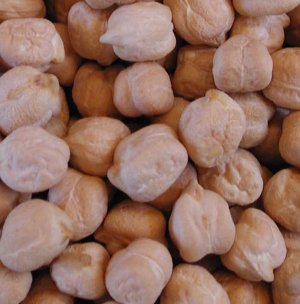
The Latin name for chickpeas, Cicer Arietinum, literally means "small ram", because the shape of this legumes somewhat resembles a ram's head.
Chickpeas are a very versatile legume and a common ingredient in many Middle Easter and Indian dishes, such as hummus, falafel and curries.
Though most people think of chickpeas as being beige in colour, some varieties are black, green, red and brown.
Health Benefits of Chickpeas
As chickpeas are a good source of fibre, they can help lower cholesterol and improve blood sugar levels, making them a great food for diabetics and insulin-resistant individuals.
Served with high-quality grains, chickpeas are an extremely low-fat, complete protein food.
Chickpeas also offer a good supply of magnesium and folic acid, as well as molybdenum, a trace mineral needed for the body's mechanism to detoxify sulphites, a preservative commonly found in wine, luncheon meats and fresh salad of most salad bars.
Sulphite-sensitive individuals who are deficient in this trace mineral may experience headaches, racing heartbeat or confusion.
Serving Suggestions for Chickpeas:

Hummus recipe Purée in a blender 1 can of drained chickpeas, 2 tablespoons extra-virgin olive oil, 1 clove (or more to taste) fresh garlic, 2 tablespoons tahini, juice of 1/2 lemon, black pepper and 1/4 teaspoon cumin or curry powder. You can add red pepper for a different colour and flavour, and you can let the hummus sit in the fridge to add texture. You could also use other types of beans, such as butter beans or cannellini, to make a different type
of hummus. |

|
Lentils
|
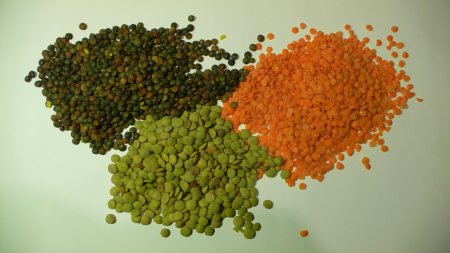
Lentils (Lens culinasis) grow in pods that contain one or two lentil seeds.
There are dozens of lentil varieties, which are classified according to their colour.
While the most common types of lentils are red, green or brown, they also come in black, yellow and orange.
These round, oval or heart-shaped beans are small in size, often smaller than the tip of a pencil eraser. They're sold whole or split into halves.
The different types of lentils offer varying consinstencies, with the brown and green varieties retaining their shape better after cooking and others generally becoming soft and mushy.
Though the flavour differs slightly among the varieties, they generally feature a hearty, dense, somewhat nutty flavour.
Compared to other types of beans, lentils are relatively quick and easy to prepare.
Lentils Health Benefits
Lentils, like other types of beans, are an excellent source of cholesterol-lowering fibre.
A study published in the Archives of Internal Medicine confirms that eating high fibre foods, such as lentils, helps prevent heart disease.
Almost 10,000 American adults participated in this study and were followed for 19 years.
People eating the most fibre, 21 grams per day, had 12% less coronary heart disease (CHD) and 11% less cardiovascular disease (CVD) compared to those eating the least, 5 grams daily.
Those eating the most water-soluble dietary fibre fared even better with a 15% reduction in risk of CHD and a 10% risk reduction in CVD.
Lentils' magnesium puts yet another plus in the column of its beneficial cardiovascular effects.
Magnesium
is Nature's own calcium channel blocker. When enough magnesium is
around, veins and arteries breathe a sigh of relief and relax, which
lessens resistance, lowers blood pressure and improves the flow of blood, oxygen and nutrients
throughout the body.
Not only lentils help lower cholesterol and prevent heart disease, they also help manage blood sugar disorders since their high fibre content prevents blood sugar levels from rising rapidly after a meal.
Interestingly, in the analysis of Nurses' Health Study II, researchers found a significantly reduced frequency of breast cancer in the women who had a higher intake of beans or lentils.
Lentils also provide good to excellent amounts of six important minerals, two B-vitamins, and proteins and with virtually no fat.
The calorie cost of all this nutrition? Just 230 calories for a whole cup of cooked lentils. This tiny nutritional giant fills you up, not out.
In addition to providing slow burning complex carbohydrates like other types of beans, lentils can increase your energy by replenishing your iron stores.
Particularly for menstruating women, who are more at risk for iron deficiency, boosting iron stores with lentils is a good idea, especially because, unlike red meat, another source of iron, lentils are not rich in fat and calories.
Serving Suggestions for Lentils
- Lentil-stuffed green peppers - Slightly under-cook your lentils so they remain firm, and mix them with wheat or spelt bread crumbs, spices and a grated or crumbled cheese and stuff your peppers. Drizzle with olive oil and bake at 300 degrees F/150 degrees C/gas 2 until the pepper is soft (usually about 45 minutes).
- A cool summer salad idea: Combine 2 cups of cooked lentils, 2 oranges cut into cubes and 2 chopped sweet peppers to make a delicious cold salad. Season with salt and your favourite herbs and spices.
- For a complete proteins meal, toss buckwheat soba noodles with cooked lentils, broccoli florets and leeks. Add some olive oil mixed with garlic and ginger.
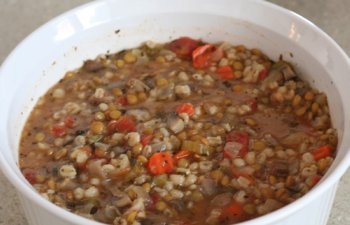
- Quick and easy lentil casserole: Layer cooked millet, cooked lentils and steamed spinach in a baking dish. Add wholemeal bread crumbs, some chopped walnuts and feta cheese. Bake at 300 degrees F/150 degrees C/gas 2 until thoroughly heated.
- Moroccan lentil soup: Cook your lentils then add diced vegetables of your choice and season with tamari, ground coriander, cumin, turmeric and cayenne.
Peas
|
The pea (Pisum sativum) comes in three major types: garden, mangetout (snow) and sugarsnap.

Garden peas
Garden peas have rounded pods that are usually slightly curved in shape. Inside the pods are green rounded pea seeds that are sweet and starchy in taste.
Garden pea varieties have smooth or wrinkled seeds. The smooth-seeded varieties tend to have more starch than the wrinkled-seeded varieties.
The wrinkled-seeded varieties are generally sweeter and usually preferred for home use. The smooth-seeded types are used more often to produce ripe seeds that are used like dry beans and to make split-pea soup.
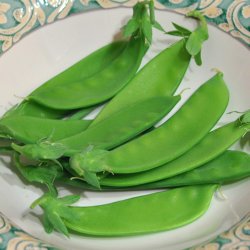
Mangetout (snow) peas
From the French words mange (meaning eat) and tout (meaning all), the flat pods of mangetout are eaten whole.
They are actually young peas still in the pod and picked before they have a chance to develop.
Mangetout are flatter than garden peas and since they are not fully opaque, you can usually see the shadows of the flat pea seeds within.
Delicious blanched and tossed in salad dressing, or steamed or stir-fried and served hot, they are extremely versatile. They can also be eaten raw in salads.

Sugar snap peas are a cross between garden and mangetout, have plump pods with a crisp, snappy texture.
The pods of both mangetout and sugarsnap peas are edible and both have a slightly sweeter and cooler taste than the garden peas.
In the U.K. 80% of the pea crop is utilized as dried peas rather than fresh peas. In the United States, this is reversed, as 90% of the peas are eaten as green peas.
Health Benefits of Peas
All peas are lower in calcium and phosphorus than other types of beans but provide similar levels of protein, carbohydrate and fat.
They are a good source of protein, B vitamins and variety of minerals including phosphorus, manganese, magnesium, potassium and iron.
In addition, dried peas are an excellent source of dietary fibre and green peas are a good source of vitamin C, vitamin K and carotenes, while dried peas contain very little of these nutrients.
As dried peas lack water, they are more calorie-dense than fresh peas.
Dried peas provide the same sorts of health benefits as other types of beans.
Serving Suggestions for Peas
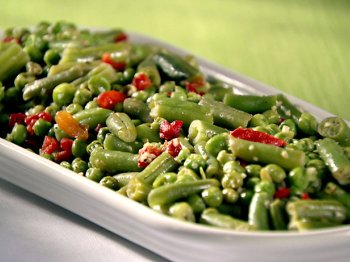
- Peas enhance green salads.
- Blanch sugarsnap peas, sauté them with garlic and shiitake mushrooms and serve them over brown rice.
- Combine drained peas, chopped apple and onion in a bowl. Separately combine sour cream or soft tofu, horseradish and salt and pepper to taste. Add to the salad, mix lightly and top with freshly squeezed lemon juice.
- Green peas can be mixed with shredded chicken, diced onions, rapeseed-oil mayonnaise, almonds, raisins and curry powder to make a delicious and colourful chicken salad.
- You can improve on canned split pea soup by adding fresh peas to enhance its flavour, texture and nutrition.
- Fresh (or freeze-dried) peas pods are a healthy, portable snack food.
Beans-related Articles
Different Types of Beans (Part 1) - Discussing Aduki beans, Alfalfa, Broad beans (Fava beans) and Carob. Also Carob vs Chocolate, Carob Fudge Recipe, Carob Mounds Recipe, Carob Cake recipe and Icing.
Different Types of Beans (Part 2) - Discussing Black beans, Haricot beans, Kidney beans, Lima beans (Butter beans), Dung beans, Pinto beans and Green beans.
Different Types of Beans (Part 3) - Discussing Chickpeas (Garbanzo beans), Lentils and Peas.
Beans and Heart Disease
For suggestions on how to go about growing your own beans, check out these websites:
Search for information on this site:
Receive Discover the Power of Healing Foods! Free
Newsletter
Articles in this Series:
Different Types of Beans
Part 1 - Aduki beans, Alfalfa, Broad beans (Fava beans), Carob
Part 2 - Black beans, Haricot beans, Kidney beans, Lima beans (Butter beans), Mung beans, Pinto beans, Green beans
Part 3 - Chickpeas, Lentil, Peas
Related Articles:
Most Popular
Pages:
The Best "Fish Oil" Supplement is Not Made from Fish
Bananas for High Blood
Pressure

Elimination Diet for IBS and Other Food
Sensitivities
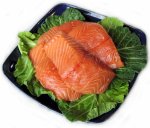
Healing Foods for Heart
Disease
Goodness Direct - Online Health and Special Diet Food Store
Offers products selected for those with special health or dietary needs such as Kosher, vegan, diabetic, and gluten free.
You can also find all sorts of organic tinned beans and anything else you can't find anywhere else. I absolutely love shopping there!

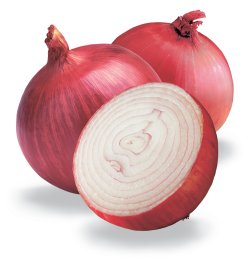


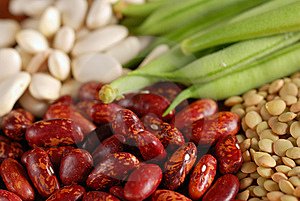


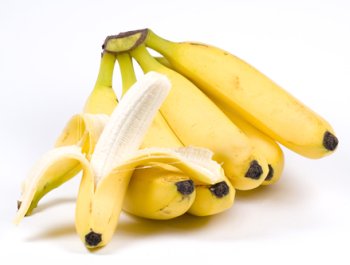

New! Comments
Have your say about what you just read! Leave me a comment in the box below.